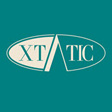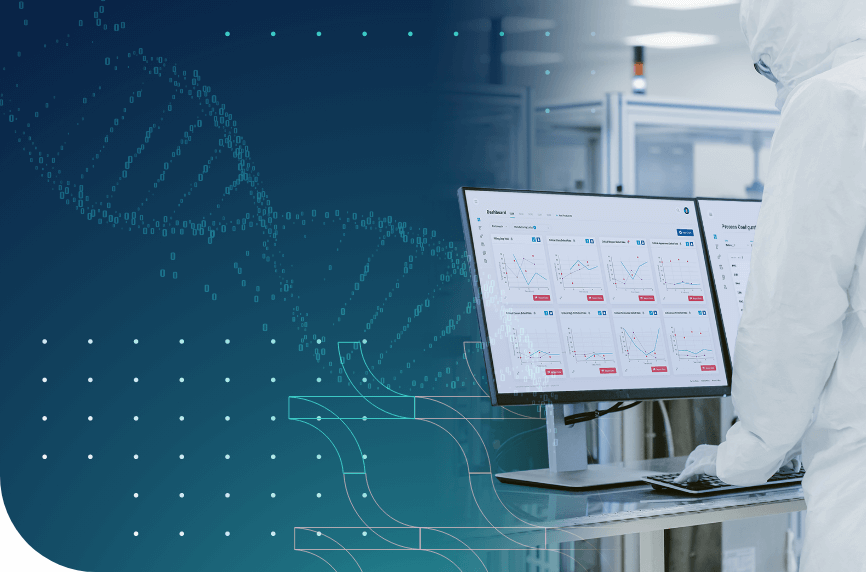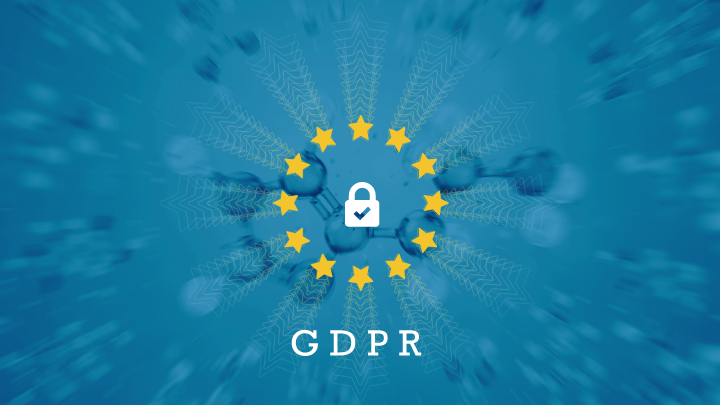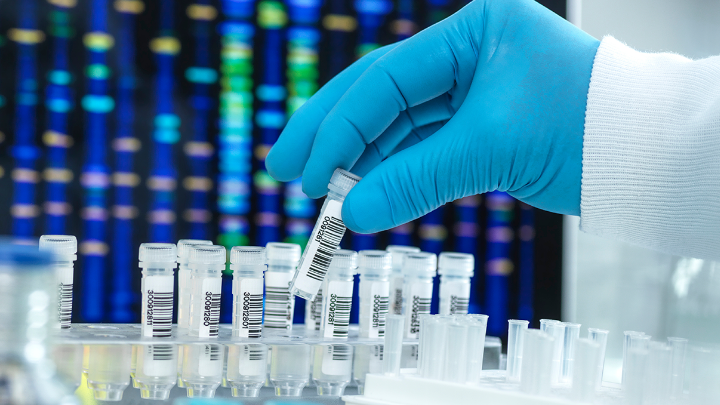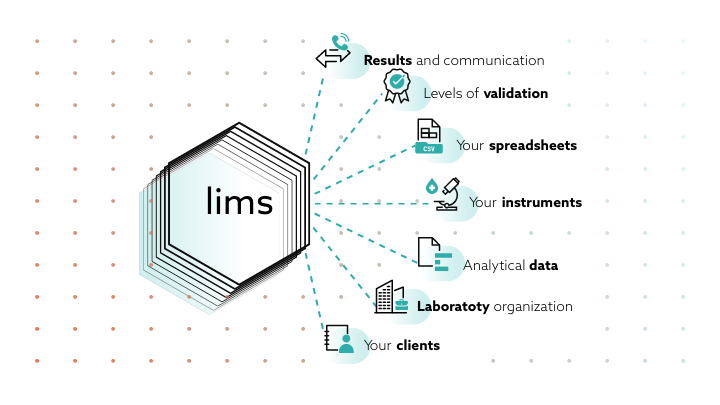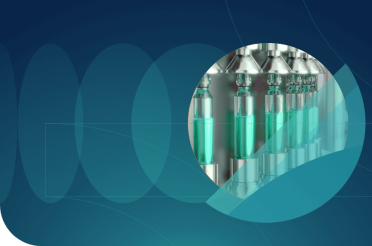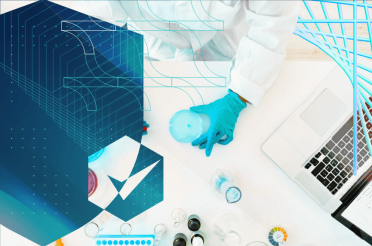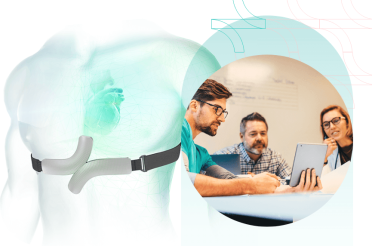The global pandemic caused a lot of pressure on the already understaffed laboratory personnel, with millions of COVID-19 tests made every day.
Data from the American Clinical Laboratory Association shows that clinical labs in the US perform more than 7 billion lab tests each year. This pressure and the lack of experienced professionals led to increasing stress levels in laboratories.
Thankfully, the growing implementation of information technology in clinical and research settings helped laboratory workers to automate manual processes and focus on the core work. As a result, the stress and tight deadlines are reduced, and overall performance improves.
Common problems in laboratories
Research shows that errors in labs have always occurred in all different laboratory tests. Medical errors became a more serious problem in the current pandemic in which the rapid tests correctly identified COVID-19 in an average of 78.3 percent of cases during the first week. These errors can happen for many reasons such as
Lack of adequate training
The fast improvements in technology can help bring quicker and more accurate diagnostics to patients and physicians. However, a lot of professionals lack expertise or any kind of practical training. The shortage of laboratory technicians and too much work leads to less time for training both new and old physicians to use the tools at their disposal.
Mismanagement of samples
The understaffed laboratories are a prerequisite for overworked and stressed-out staff. This can mean an unhealthy working environment full of exhausted specialists or rushed results. Such a workforce is followed by mistakes in the management and diagnostics of patience when results are mixed or mistaken.
Too much documentation
According to a survey of Agilent Survey of Pharma Lab Leaders on Workflow and Laboratory Efficiencies, 70% of the participants cited that improved documentation of the sample chain is needed. Followed by the fact that 80% reported that further workflow optimizations are needed, it is evident that documentation is a problem in laboratory settings.
Compliance with regulations
A big part of running a legitimate laboratory is the access to accreditation of the facility. A lab needs to be a trusted source of information to have business with other healthcare providers and secure positive patient outcomes. For this reason, different governments, private medical institutions, and international organizations require accreditation of the laboratory.
Quality assurance checks make sure that the laboratory information is up to the scientific standard but even outside of that there are requirements. The protection and integrity of private data is a crucial part of both digital and material documents.

Increase your lab’s efficiency with expert-approved software solutions
Get the best advice out there on how to automate your lab’s processes using AI by getting in touch with our experts at BGO Software.

Such regulations like the GDPR and CCEP require things like minimization of data collection, management of who has access to what data, and retention and security of information.
The Disconnect between Management and Workers
In any organization, the danger of mismatching goals and ideals is present. Usually, managers and owners look too far into the future with plans of expansion, while workers focus on everyday problems.
Laboratories are no different according to surveys of laboratory personnel. The lack of support from management is one of the biggest problems specialists face. (4)Workers are given more work to do without the necessary time to adapt to the increased workload or learn new techniques.
Meanwhile, management has to manage reinvestment into the business to meet growing demands and expand the business.
The impact of laboratory genetics
Before we analyze the benefits of software for lab test tools, we should talk about what exactly happens in genetics laboratories. The work there concerns itself with the study of genetic disease and the improvement of genetic testing and similar technology.
This can range from chromosome studies and DNA and molecular genetic testing to fertility status and evaluation of inheritable diseases. These tests can be used to predict the likelihood of inherited illnesses or if a person is infected with a virus.
What do laboratory geneticists do?
In this discipline, doctors use laboratory instruments to sequence the DNA of patients to build comprehensive reports about their current and potential future health. This is a crucial part of patient care, with as much as 70% of medical decisions relying on lab tests.
The medical technologist that manages the laboratory operations is tasked with the heavy job of being the main support of other healthcare providers.
What is the current state of the discipline?
The difficulties that arose because of the pandemic brought to the forefront the need for medical genetics. It made it obvious just how critical it is as a way to give guidance to everyone.
Becoming a laboratory geneticist requires a cohesive education and training period, which is one of the main problems that cause a shortage of these professionals. Other Software solutions, such as laboratory information systems, are supposed to minimize the effects of such a severe shortage.
The impact of laboratory information system (LIS)
Classification of software tools
The management of labs is a complex process of balancing Laboratory instruments and patient data to provide the information needed for adequate medical analysis. This has led to the development of two similar but separate kinds of software—laboratory information systems (LIS) and laboratory information management systems (LIMS).
What is the difference between LIMS/LIS?
A LIS is a software system used in clinical laboratories to record, organize, and save data. Traditionally, a LIS has been best at transmitting laboratory test orders to lab instruments, tracking those orders, and then recording the results, often to a searchable database.
The standard LIS has supported the operations of public and private health facilities (such as hospitals and clinics) and their associated labs by handling and reporting vital data concerning immunology.
LIMS is software that keeps track of data linked with samples, experiments, laboratory workflows, and devices to improve lab productivity and efficiency. LIMS can have particular features for research and development laboratories, process development and production laboratories, or bioanalytical laboratories.
The conventional differences between LIS and LIMS are that the former is patient-centric, keeping personally identifiable information secure. LIMS is a broader software system with more flexibility but fewer specifications. It is used in different industries outside of medicine, such as generic testing of products in other fields.
Features of laboratory software
Laboratory software is developed to fit the specific needs of laboratories. These systems automate data management, sample tracking, and report generation and provide laboratory technicians with cohesive financial and inventory modules. This way they substitute the role of a team of assistants that would otherwise be needed to keep track of all of this.
What can a laboratory management system offer?
Saving time
Laboratories have various facilities equipped for different operations and tests. This means a single sample may need to be moved and analyzed in different places and at specific times and orders. This process can be taxing on the attention and memory of the laboratory technicians, which slows down the process.
A solid laboratory information system may have a batch sheet-based sample tracking mechanism, which will provide a clear and organized method for recording and tracking the progress of samples.
Tracking samples
Even smaller labs today can have more than 1,000 samples to process a week which can lead to longer turnaround times, confusion, and slow analysis of the data.
If a lab uses LIS as soon as the sample is taken and bar-coded, the option of sampling management automates the handling process, allowing the technician to trace samples in real-time.
Streamlining information
Having too much information to analyze can lead to confusion and a waste of time and resources. Doctors need to look over dozens of reports a day just to make sure they are in the right format.
The auto-authorization feature of LIS, which automatically authorizes reports with normal values, can save lab workers substantial time when creating reports. Only reports with aberrant values are forwarded for doctor approval, resulting in significant workload and time savings.

Reduce the errors and increase the efficiency of lab medicine production
Unlock the best-kept secrets to AI-driven lab automation with expert guidance from BGO Software's team.
Acting fast in an emergency
For a doctor to respond to an emergency, they need access to test results. Miscommunication or slow response in prioritization of the lab leads to loss of life. A well-built laboratory software provides a panic alert solution that allows the system to automatically send notifications to the referring physician.
Increase revenue
Management can use LIS to improve the analytics of the workflow and improve in better ways. Powerful dashboards provide customized financial, operational, inventory, test, and lab reporting. A good lab information system assists lab owners in understanding, classifying, analyzing, and predicting data as well as tracking metrics and maximizing income.
Saving money
Managing inventory is a crucial part of any business. Analyzing past purchases and rates of usage can save or waste a lot of resources, such as money and space. Thankfully, through predictive reordering and expiration notifications, the advanced inventory module may automate stock levels.
Expanding the business
Managing different operations can also be improved through LIS. Managers can have easier access to data to support their decisions. Owners of labs may manage their facilities from a single, secure platform. This makes communication between sites much faster and allows for stable growth.
What are the benefits of a laboratory information management system?
Customization and integration
LIMS provides a solution that adapts to a user’s specific needs, not the other way around. This software is similar to a laboratory information system, as it shares most features and functionality.
LIMS may also be connected with corporate resource planning (ERP) programs and accounting software to improve resource planning and data management efficiency.
Furthermore, LIMS can be integrated into other systems with different applications within a laboratory. For example, such software might be the Laboratory Execution System (LES), a program that integrates LIMS with the lab equipment and allows for real-time data transfer and reporting.
Cloud technology can be integrated into a laboratory information management system (LIMS) in several ways. One way is to use a cloud-based LIMS, where the software and data are hosted on remote servers and accessed over the internet.
This eliminates the need for on-premises hardware and allows for easy access to the system from any location with internet access. Another way is to use a hybrid approach, where the LIMS is hosted on-premises but uses cloud-based storage for data backup and disaster recovery.
Improving collaboration in the laboratory
When using LIMS, teams no longer have to waste time searching for or tracking information in several systems because everything is accessible through a single system.
The LIMS assures that all sample processing and measurement information is always available and will not be lost. All quality control and quality assurance criteria are met, and all laboratory personnel are always up-to-date owing to consolidated data storage and retrieval.
LIMS also helps close the divide between management and the workforce, which arises from different perspectives. Through this software, which is a centralized database, it is easier for these two groups to be on the same page.
Furthermore, LIMS allows for feedback about the work of the laboratory technicians and about the ways that management is leading the team.
Streamline workflows
Laboratory managers have to keep track of the status of different tasks and ensure technicians do them on time. The integration of LIMS accelerates this workflow in your facility by using completion monitoring. The laboratory specialist is assigned tasks, and each job is tracked on the software.
Training Personal
LIMS is useful for new recruits as well as old ones. Such a system can have many functions that improve and accelerate the learning experience of staff. Software applications such as standardized processes that are easy to follow as you get the hang of a task, and training materials like video tutorials, and informational manuals
Furthermore tracking software can give both management and workers the opportunity to keep track of their progress in the educational and training process.
Transparency and traceability
Mistakes can happen in the hectic world of genetic analysis while machines or samples are being moved or replaced. LIMS enables a lab worker to document all measurements and changes in real time.
This implies that data from physical measures may still be retrieved and analyzed decades later. Thus, double-checking where and why an inconsistency exists is much easier and less time-consuming.
Disaster recovery
LIMS can provide the ability to quickly recover data in case of a disaster, allowing the laboratory to resume operations as soon as possible. It can also provide the ability to roll back data to a specific point in time, which can help to restore the information to a state before the disaster.
Furthermore, LIMS can help the laboratory to maintain business continuity in the event of a disaster by providing the ability to access the data from a remote location and continue to operate.
Meet compliance
LIMS can assist laboratories in meeting the General Data Protection Regulation (GDPR), which is in effect in the EU and USA compliance requirements (HIPAA, HITECH, etc.) by offering solutions for storing and tracking personal data.
This software can be set to gather and keep just the personal data required for the required operations within the laboratory. Other applications include monitoring who has access to what data and other security practices that can keep the information safe from breaches.
Application of artificial intelligence in a laboratory setting
Artificial intelligence relies on deep learning and analysis of data to simulate actions usually unattainable to computers.
Its application in laboratory genetics looks promising in cases such as: (6)
- Variant calling—detection of particular genetic variations among the millions that populate each genome which requires great precision.
- Genetic diagnosis—the interpretation of human genome data based on previous knowledge of relevant genetic variations.
- Phenotype-to-genotype mapping—mapping genetic data through the extraction of higher-level diagnostic ideas inherent in medical imaging.
- Calculating genetic risk—calculating the probability of illness by analyzing a complex interaction of inherited genetic risk factors, environmental exposures, and behavioral variables.
Artificial intelligence (AI) can be applied in a variety of ways to improve laboratory information management systems (LIMS):
- Automating data entry and validation. AI can be used to automatically extract data from various sources, such as lab instruments, and ensure that it is accurate and complete.
- Streamlining workflows. Artificial intelligence might be used to optimize laboratory processes, such as sample tracking and inventory management, by identifying bottlenecks and inefficiencies.
- Enhancing data analysis. The innovative technology can be used to analyze large amounts of lab data and uncover insights that may not be obvious to human researchers.
- Predictive maintenance and troubleshooting. AI models may predict the need for maintenance and troubleshooting issues with lab equipment before they occur.
- Quality control. By performing image analysis and pattern recognition, AI may improve the accuracy and speed of lab results.
All these features are used to improve the efficiency, accuracy, and overall quality of laboratory operations.
The demand for laboratory results is growing as people and institutions use more genetic analysis or testing for diagnosis and prevention. While the job market tries to adapt to the worker shortage, specialists may utilize laboratory software to streamline workflows and improve efficiency and patient care.

Whether you’re a startup, a Fortune 100 company or a government organisation, our team can deliver a solution that works for you.
BGO Software
However, building a system requires a reliable partner that will offer 24/7 support and maintenance to ensure safe and smooth operations.
